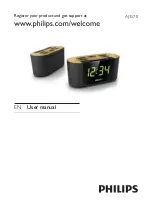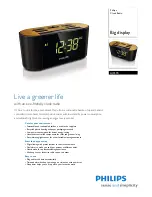
L20-LV100-5100(v1.0)
1154e/01
GENERAL DESCRIPTION
INSTALLATION
REMOTE OUTPUT CAPABILITY
This type of detector (Figure 1) continuously samples the air and the temperature variation in the protected area to provide the earliest
warning of fire and yet offers a high level of false alarm rejection.
The VELOX digital communication protocol employed by the monitoring control panel provides high rates of information exchange in
combination with comprehensive features that ensure fast and secure responses.
This device benefits from a “Double Dust Trap” incorporated into the design of the smoke entry ports, hence limiting potential
contamination and extending periods between maintenance without compromising sensitivity of response.
These detectors are designed for open area protection and must only be connected to control panels that use the VELOX proprietary
analogue-intelligent addressable communication protocol for monitoring and control.
The centrally positioned red LED indicator provides 360° visibility and thus does not require any orientation during installation.
Remote output capability is available as a standard feature so a remote indication lamp or a compatible platform sounder (check power
requirements) may be wired to the base terminals.
If other equipment is connected to the remote output, its supply current must be eventually limited by using an adequate resistor.
Consult the TECHNICAL SPECIFICATIONS table and assess the external device current absorption’s value.
Note:
Before installing this device please thoroughly read this leaflet and refer to the applicable European Standards and National
Codes of Practice (e.g. BS5839-1:2002 for UK) for guidance on location, spacing and acceptable use. Also seek guidance from the control
panel instructions to ensure appropriate design criteria and configuration specifications are followed.
LV100
ANALOGUE ADDRESSABLE PHOTOELECTRIC SMOKE DETECTOR LITE
TECHNICAL SPECIFICATIONS
Power supply *
from 18 V (min) to 40 V (max)
Average standby current consumption
70 uA @ 24 V
Remote output max current consumption
(externally limited)
20 mA
Operating temperature range
-30 °C / +70 °C (no icing)
Humidity
95% RH (no condensation)
Height (standard base included)
54 mm
Diameter
110 mm
Weight (standard base included)
130 g
This photo and heat detector must be used in combination with VELOX control panels employing the VELOX communication protocol.
The location of detectors should follow recognised national or international application codes of practice.
The detector can be mounted on VELOX adaptor base or VELOX deep adaptor base.
Bases supplied with a metal shorting clip installed between the two negative terminals allow more flexibility when connecting detectors
to the loop and permits the continuity of the loop cabling to be tested after installation and prior to the detectors being fitted.
Connections to the base terminals are polarity sensitive thus please
check by referring to the wiring diagram in Figure 2 !
SETTING THE ADDRESS
Detectors can be addressed using a special hand-held programming unit.
Addresses may be selected from a range from 1 to 240 each device on the loop must have a unique address.
SENSITIVITY SETTINGS
A choice of a sensitivity modes are available which can be set via the hand-held programming unit
Figure 1 - View of the detector on its base
*Product operates down to 15V, but without LED indication
Figure 2 - VELOX adaptor base and VELOX deep adaptor base loop wiring
TAMPER DETECTION
ANTI-TAMPER MECHANICAL BLOCK FEATURE
A fault condition is triggered on the VELOX control panel if a detector, on the loop, is removed from its mounting base.
The detector may be locked onto its base by removing
the small plastic element on the base’s detector blocking
hook by using a suitable tool (e.g. a small screwdriver) in-
serted through the access hole on the side of the mount-
ing base (Figure 3).
To remove the detector from the base, if mechanically
blocked, insert a suitable tool (e.g. a small screwdriver)
through the access hole on the side of the mounting base
(Figure 3).
1.
Position the detector cen-
trally on its mounting base
(ensure it is level).
2.
Rotate clockwise applying
gentle pressure. The detector
will drop into its keyed loca-
tion.
3.
Press more firmly
to win the
force of the contacts.
4.
Continue to rotate clockwise
a few degrees until the detec-
tor has fully engaged in the
mounting base.
5.
When the detector is firmly
engaged verify the alignment
between the detector and the
raised reference marks on the
base (Figure 4).
6.
After all detectors and other loop devices have been installed, apply
power to the loop in accordance with the control panel’s installation in-
structions.
7.
Test the detectors as described in the section headed “TESTING”.
Mode Sensitvity
Description
1
Level 1
LPCB Approved
High sensitivity level
2
Level 2
LPCB Approved
Medium high sensitivity level
3
Level 3
LPCB Approved
Medium low sensitivity level
4
Level 4
LPCB Approved
Low sensitivity level
WARNING
Disconnect loop power before installing the detector.
CAUTION
Dust covers help to protect the devices during ship-
ping and when first installed. They are not intended
to provide complete protection against contamination,
therefore, detectors should be removed before con-
struction, major re-decoration or other dust producing
work is started. DUST COVERS MUST BE REMOVED
BEFORE THE SYSTEM CAN BE MADE OPERATIONAL.
Figure 3 - The anti-tamper block and its handling




















